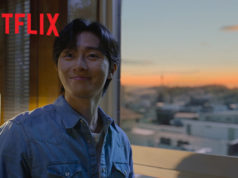YOU ARE assured of two incontestable assaults when you enter the Iskinita/Alley almost any time of the day. There is the countless playing children, and there is that smell. Indeed, the kind of oxygen you swallow is a mixture of all sorts of depressing chemicals: a dog shit, a dead rat massacred from an evening fight, human sweats from an immobile elderly mangled by acute diabetes and is abandoned by time and his family, and that slow yet steady flowing dark-colored fluid shuffled by all types of human feces from a narrow canal. Consider that the end tips of your stretched right and left hands represent the navigating Iskinita-space upon which all your active life revolves, evolves and even devolves. In that same Iskinita, you are expected to walk along, run into, sit still, grind in and even contemplate the shallowness, or depths of your life.
On a break of the morning sun, two tattooed mothers are fighting over a debt that was, is and will not be paid. In mid-afternoon, a motley crowd of tambays who started drinking last night are still holding their bottles of alcoholic beverages, and at any moment, given the seriousness of their intoxication and conversation, is about to erupt into a violent pandemonium. In the evening, three young thugs are wickedly scheming a plan to peddle illegal drugs, for survival and for their own recreational purposes.
From a slit-crack of a flimsy wall on a second floor of a highly congested rented house of the Iskinita, a 10-year-old boy peeps and inadvertently witnesses the bludgeoning of his father. The boy’s father who was only clad in his household shorts made the last-ditch effort to escape the arresting police officers by climbing the rusted metal roofs of the neighboring houses. In the meantime, the boy’s inconsolable mother is sprawling on the pavement of the Iskinita, in absolute pain and anguish, desperately clinging to her dead husband’s body, almost comparable in the aesthetic drama to that of Michelangelo’s La Pieta. The only difference is that you know that this one is for real.
The tragedy is made even more tragic because no one cares to bring anyone to justice, not the police because they are busy solving all other criminal cases, not the boy’s family because they have no money to pursue the case, let alone have a decent meal. The muffled silence of the citizens of Iskinita is punctured only by the wailings and curses of the boy’s mother and relatives. Time stops, and as if in perfect cue, the foul air of Iskinita is also in a stand still.
Because selling, buying and using of illegal drugs proliferate in the Iskinita, a state-sponsored police crackdown called tokhang makes so much sense, at least as far as the government is concerned. Through the years, the killing of the citizens of Iskinita has intensified, resulting to thousands of piled-up dead bodies. If you are into history, the grotesque images of the well-orchestrated murders remind you of the genocide executed by Hitler of Germany or that of Pol Pot of Cambodia.
The tokhang-drug war is unmistakably a war, complete with the so-called unrepentant culprits, who for all intent and purposes, according to the police, all have guns and have taken the first shot. The police officers, accordingly, simply defended themselves. The 30 or so thousand culprits, all of them, except for one or two, asked for their death. The bang-bang gunshot sounds reverberate within the ears of all the citizens of Iskinita. A chilling message is registered.
But, make no mistake. The Iskinita is not only about the deplorable narratives, the restricted space, the abject poverty, the myriad of violence or that offensive smell, or God forbids, an illegal drug den. Without attempting to romanticize the Iskinita or its citizens, the space also represents the unmitigated socio-economic struggles of families and individuals reduced to this narrowest of corner, the hopes of intergenerational families that by hard work or by sheer luck they will make it somehow, the love and protection afforded by one human being to another in the most toxic of environment.
The Iskinita is not only a phenomenological reality, but a nagging social perspective or paradigm. Whether we hit or miss it, the paradigm we carry will impact the citizens of Iskinita.
If we seriously consider what our scientists say about the citizens of Iskinita, we will come up with a human and humane response to the trouble that is Iskinita. Scientists and experts say that there is a very strong correlation and causation between poverty and drug addiction this side of our pond. Moreover, scientists and experts say that drug addiction is a health issue and should be dealt with as such. However, you can forget what the scientists and experts say, we can just inclusively view the citizens of Iskinita as human beings. Then, we will not have all the moral reasons and platitudes to deploy violent force or response to curb poverty, violence or illegal drugs. We will send economic planners, social workers, doctors and educators to the Iskinita.
Yes Rita, in many cases of human existence, the corporal and violent means of solving socio-economic dilemmas are proven to be mostly inutile. They only serve the image of strong parents or leaders. In the long run, they do not help families nor the nation’s constituents, whether you happen to be living inside or outside of the Iskinita.
(raclores2014@gmail.com)




